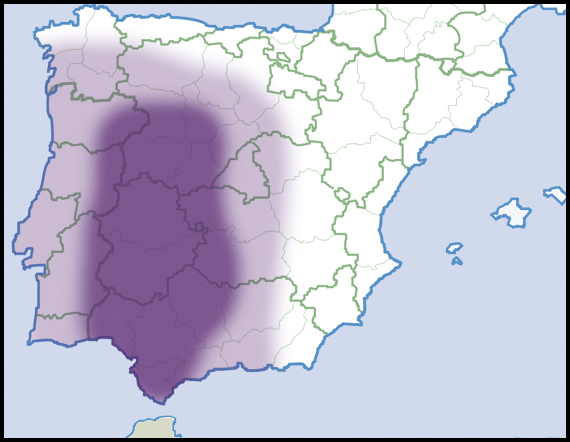|
Unio Delphinus
''Unio delphinus'' is a species of bivalve belonging to the family Unionidae. MolluscaBase eds. (2023). MolluscaBase. Unio delphinus Spengler, 1793. Accessed through: World Register of Marine Species at: https://marinespecies.org/aphia.php?p=taxdetails&id=1355512 on 2023-01-09 Distribution This species occurs in the Atlantic basins of the Iberian Peninsula and Morocco Morocco (),, ) officially the Kingdom of Morocco, is the westernmost country in the Maghreb region of North Africa. It overlooks the Mediterranean Sea to the north and the Atlantic Ocean to the west, and has land borders with Algeria to ... References * Welter-Schultes, F.W. (2012). European non-marine molluscs, a guide for species identification. Planet Poster Editions, Göttingen. A1-A3, 1–679, Q1-Q78 External links Spengler L. (1793). Beskrivelse over et nyt Slægt af de toskallede Konchylier, forhen af mig kaldet Chæna, saa og over det Linnéiske Slægt Mya, hvilket nøiere bestemmes, og indde ... [...More Info...] [...Related Items...] OR: [Wikipedia] [Google] [Baidu] |
Bivalve
Bivalvia (), in previous centuries referred to as the Lamellibranchiata and Pelecypoda, is a class of marine and freshwater molluscs that have laterally compressed bodies enclosed by a shell consisting of two hinged parts. As a group, bivalves have no head and they lack some usual molluscan organs, like the radula and the odontophore. They include the clams, oysters, cockles, mussels, scallops, and numerous other families that live in saltwater, as well as a number of families that live in freshwater. The majority are filter feeders. The gills have evolved into ctenidia, specialised organs for feeding and breathing. Most bivalves bury themselves in sediment, where they are relatively safe from predation. Others lie on the sea floor or attach themselves to rocks or other hard surfaces. Some bivalves, such as the scallops and file shells, can swim. The shipworms bore into wood, clay, or stone and live inside these substances. The shell of a bivalve is composed of calc ... [...More Info...] [...Related Items...] OR: [Wikipedia] [Google] [Baidu] |
Unionidae
The Unionidae are a family of freshwater mussels, the largest in the order Unionida, the bivalve molluscs sometimes known as river mussels, or simply as unionids. The range of distribution for this family is world-wide. It is at its most diverse in North America, with about 297 recognised taxa, but China and Southeast Asia also support very diverse faunas. Freshwater mussels occupy a wide range of habitats, but most often occupy lotic waters, i.e. flowing water such as rivers, streams and creeks. Origin and early diversification The recent phylogenetic study reveals that the Unionidae most likely originated in Southeast and East Asia in the Jurassic, with the earliest expansions into North America and Africa (since the mid-Cretaceous) followed by the colonization of Europe and India (since the Paleocene). Life history Unionidae burrow into the substrate, with their posterior margins exposed. They pump water through the incurrent aperture, obtaining oxygen and food. They remove ... [...More Info...] [...Related Items...] OR: [Wikipedia] [Google] [Baidu] |
Iberian Peninsula
The Iberian Peninsula (), ** * Aragonese and Occitan: ''Peninsula Iberica'' ** ** * french: Péninsule Ibérique * mwl, Península Eibérica * eu, Iberiar penintsula also known as Iberia, is a peninsula in southwestern Europe, defining the westernmost edge of Eurasia. It is principally divided between Spain and Portugal, comprising most of their territory, as well as a small area of Southern France, Andorra, and Gibraltar. With an area of approximately , and a population of roughly 53 million, it is the second largest European peninsula by area, after the Scandinavian Peninsula. Name Greek name The word ''Iberia'' is a noun adapted from the Latin word "Hiberia" originating in the Ancient Greek word Ἰβηρία ('), used by Greek geographers under the rule of the Roman Empire to refer to what is known today in English as the Iberian Peninsula. At that time, the name did not describe a single geographical entity or a distinct population; the same name was us ... [...More Info...] [...Related Items...] OR: [Wikipedia] [Google] [Baidu] |
Morocco
Morocco (),, ) officially the Kingdom of Morocco, is the westernmost country in the Maghreb region of North Africa. It overlooks the Mediterranean Sea to the north and the Atlantic Ocean to the west, and has land borders with Algeria to the east, and the disputed territory of Western Sahara to the south. Mauritania lies to the south of Western Sahara. Morocco also claims the Spanish exclaves of Ceuta, Melilla and Peñón de Vélez de la Gomera, and several small Spanish-controlled islands off its coast. It spans an area of or , with a population of roughly 37 million. Its official and predominant religion is Islam, and the official languages are Arabic and Berber; the Moroccan dialect of Arabic and French are also widely spoken. Moroccan identity and culture is a mix of Arab, Berber, and European cultures. Its capital is Rabat, while its largest city is Casablanca. In a region inhabited since the Paleolithic Era over 300,000 years ago, the first Moroccan s ... [...More Info...] [...Related Items...] OR: [Wikipedia] [Google] [Baidu] |

